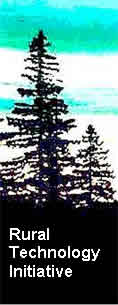|
2002
Save
or Print a PDF copy of Fact Sheet #14
| Agricultural income viability is an important
consideration as recent listings of Pacific Northwest (PNW)
salmon under the Endangered Species Act (ESA) created the need
for new strategies to protect the water quality and fish habitat
of PNW streams. To date there has been minimal research on the
health and salmon survival impacts from commercial agriculture
enterprises. One hypothesis suggests that fast growing hardwood
buffers may filter farmland run-off while providing stream bank
stabilization and shade. These plantations, when harvested in
a sustainable agroforestry context, may generate additional
farm income and add to regional hardwood supplies. A study to
examine the costs and benefits of hardwood riparian buffers
on agricultural lands has been undertaken with cooperation of
local farmers in the Skagit drainage of western Washington.
|
|
Researchers will evaluate the recently established Conservation Reserve
Enhancement Program (CREP) buffers and four new buffer treatments
against current no buffer conditions. Buffer treatments include: 1)
a 50' buffer of red alder (Alnus rubra) set back 15' from the stream
with a 25' grass filter strip, 2) a 50' buffer of hybrid poplar (Populus)
set back 15' from the stream with a 25' grass filter strip, 3) a 75'grass
filter strip alone, and 4) existing farming practice (control). All
experimental plots will be monitored for nutrient (N & P) and
sediment movement, shade, and bank stabilization. Buffer alternatives
will also be evaluated for short and long term economic impact on
the farm enterprise and for potential contribution to western Washington
hardwood supply. Through the CREP, provided by the Conservation and
Environmental Programs Division of the Farm Service Agency of the
USDA, farmers can receive annual rental payments and cost-share assistance
to establish long-term, forested buffers on eligible riparian areas
and wetlands. For more information see the CREP website: http://www.fsa.usda.gov/dafp/cepd/crep.htm.
Proposals to expand the scope of this project to examine the marginal
costs and benefits of different buffer widths and vegetative strategies
across a broader set of sample sites will be submitted to the USDA
Sustainable Agriculture, Research, and Education (SARE) agency and
to the Cooperative State Research, Education, and Extension Service
(CREES).
Contacts: For more information contact Carolyn Henri,( ronlyn gte.net
), Rural Technology Initiative, University of Washington, (rti gte.net
), Rural Technology Initiative, University of Washington, (rti u.washington.edu
) u.washington.edu
)
|









